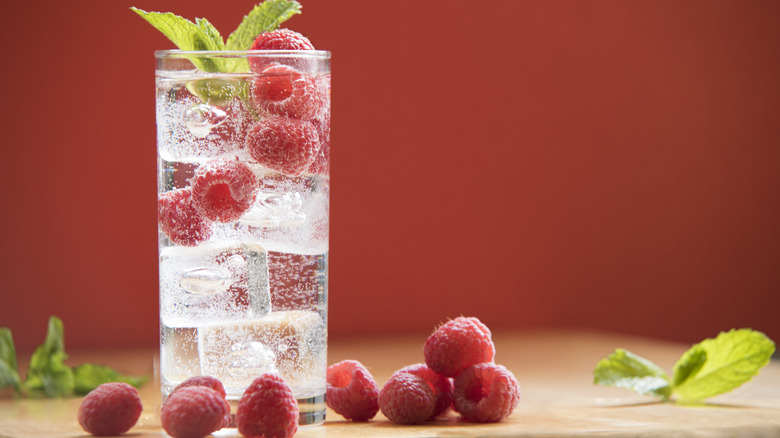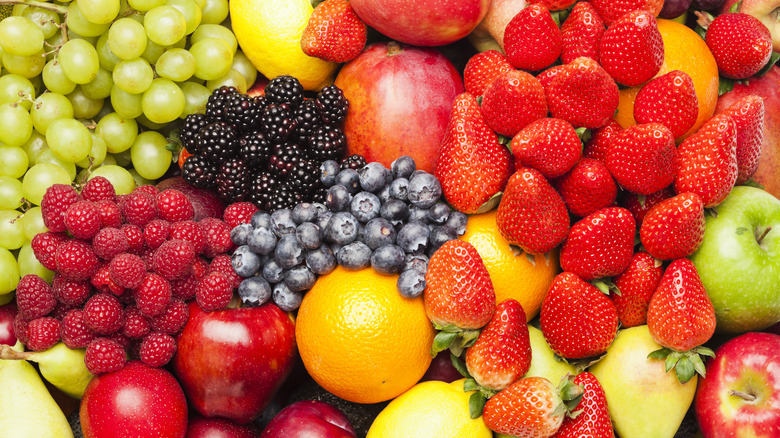Bubbly Drinks Are The Easy Way To Liven Up Your Fruit
What's better than a plump juicy berry? A plump juicy fizzy berry! Fortunately, there's a way to liven up the fruits you're eating: by soaking them in bubbly drinks. Infusing fruits with beverages like seltzer, sparkling water, or club soda can help them pack a greater punch.
By combining these drinks with your favorite fruits, you can actually make carbonated fruit. Each bite will bring forth a burst of bubbly energy. Fruit maintains its flavor after absorbing carbonation, especially if you use an unflavored soda. Unlike fruit that's soaked in alcohol, carbonated fruit will still taste sweet — the added carbonation just makes the fruit fizzy and bubbly. If you want to mix it up you can add an extra element with ginger beer or flavored seltzer.
Fizzy fruit can be eaten straight, putting a fun spin on an everyday snack. Of course, there are ways to make it more interesting. Coating carbonated fruit with sugar, dipping it in chocolate, or topping it with syrup can make it feel more like a dessert. It can also be used to enhance other dishes and beverages. Carbonated fruit can serve as a topping for ice cream or pie. Similarly, it adds some sparkle beverages like iced tea, lemonade, and even cocktails, as a garnish or mixed right in with the ice.
The best way to carbonate your fruit
The easiest and safest way to make carbonated fruit is to soak it in the bubbly beverage of your choosing. Depending on the size of your fruit, you'll need a bowl or glass to do this. Some fruits work better than others. Denser ones, like apples and grapes, will absorb fizzy drinks without becoming mushy. Softer fruits, like berries, can still be carbonated, but you may want to soak them for less time.
There's no "right" amount of time to submerge the fruit, but 20 to 30 minutes should produce the desired effect. The time may vary depending on the fruit's texture. And once the fruit is done soaking, you'll want to eat it right away. The carbonation begins wearing off after about 15 minutes. That's why this is best as a topping or garnish rather than an ingredient in a more complicated recipe.
Dry ice can also be used to make carbonated fruit, but it's a more arduous process. Because dry ice is carbon dioxide in its solid form, it lets off gas. The fruit absorbs the gas, giving it a nice crackle. Unfortunately, small portions of dry ice are hard to come by. Working with dry ice also poses safety risks, as Food Network notes it can cause burns, let off dangerous fumes, and cause explosions when stored improperly. Anyone going this route should carefully follow the Centers for Disease Control's guidelines for handling dry ice.

